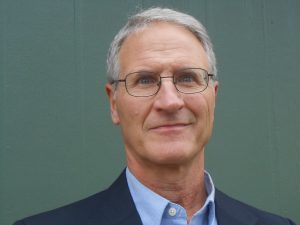By Sandi Page, Member, FAU LLI Jupiter Marketing Committee member
Michael Tougias is an award-winning New York Times bestselling author and has written or co-authored 26 books on a variety of subjects: true survival stories, history, humor and the outdoors, inspiration, and Young Adult/Middle Reader versions of some of his books. He will be back at Osher Lifelong Learning Institute, Jupiter on Tuesday, February 20, 2018 for a presentation on the war between the Colonists and Native Americans in 1675-1676. Mr. Tougias has written two books on the subject: “Until I Have No Country (a novel of King Philip’s War)” and co-authored, with Eric Schultz, “King Philip’s War: The History and Legacy of America’s Forgotten Conflict.” A book-signing will follow his lecture.
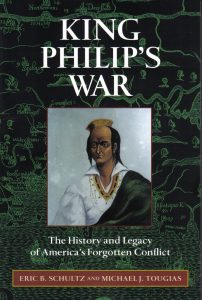 Michael Tougias, who was “King Philip” and where did this little-referenced war take place?
Michael Tougias, who was “King Philip” and where did this little-referenced war take place?
King Philip was a Wampanoag leader whose Native American name was Metacom. He was the son of Massasoit. During a peaceful period before the war, the English bestowed upon Metacom the English name of Philip and called him a king instead of sachem (native for leader). The War was fought in New England.
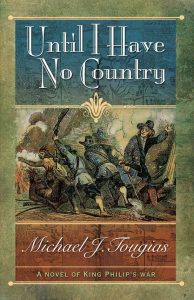 How did you become interested in the subject and why did you write not one, but two, books on it?
How did you become interested in the subject and why did you write not one, but two, books on it?
When I first researched the war, I was surprised to learn that not only was this the first major war in America, but it also had the highest casualty rate of any war involving America – a higher casualty rate per capita than even the Civil War. I realized that many people were not aware of this event and I first decided to tell the story through my historical novel Until I Have No Country. Then, I joined forces with author Eric Schultz for our history of the war, a book titled King Philip’s War. Eric is a superb researcher and writer, and this book covers every significant event during the war and also the reasons why this war happened.
One of the books is a fictionalized account of the war and the other is non-fiction. Which is more difficult to write, fiction or non-fiction? Why?
I think that depends on the author. On the one hand, if an author really tries to stay true to the facts as I did during the writing of the historical novel, it can be difficult because the research is almost as daunting as the non-fiction version, and then you need to develop compelling characters. I’ve written and co-written 26 books and Until I Have No Country is my only work of fiction, but my plan is to write more historical fiction in the future. I think historical fiction can sometimes bring in a wider audience to a subject that the author is passionate about.
In 2014, you also collaborated on a memoir, this time with your daughter Kristin, titled The Cringe Chronicles: Mortifying Misadventures with my Dad. What special challenges did that project present? Which one of you had the final say in any “artistic” differences? How did you handle her remembrances of events that you had previously considered anodyne?
The Cringe Chronicles was a joy to co-author with my daughter. She was the lead writer, focusing on her teenage years growing up with an eccentric Dad (me!) and all the strange trouble we got ourselves into. Kristin came up with the concept that at the end of each chapter, she would give me a page or two for my rebuttal and different point of view on the same incident. I was comfortable writing humor because I had written a book about my cabin in Vermont titled There’s A Porcupine In My Outhouse: The Misadventures of a Mountain-man Wannabe. That won the best nature book of the year in 2003 from the Independent Publishers Association. So when Kristin wanted to write The Cringe Chronicles, I jumped at the opportunity.
The reviews on your books are uniformly excellent but there must be an unhappy reader comment or book review from time to time. I personally find truly bad reviews to be a high art form and a wonderful source of entertainment, not to be taken seriously. (Dorothy Parker’s witty quotes on some writers’ works have always amused me). What one terrible, but ultimately funny, review of your work stands out? How do reviews in general, good or bad, affect you?
I remember when I wrote my very first book, which included natural history, The Boston Globe reviewer said I wasn’t as good as Thoreau. I thought to myself “Who is, when it comes to nature?” Since then, I’ve never let a bad review bother me. When I’m writing, my mantra is “Keep it fast paced.” I love books that pull me in and don’t let me go, and that’s what I try to write.
One of your books, The Finest Hours, about a heroic rescue of 30 stranded sailors by the U.S. Coast Guard off the coast of Cape Cod, was turned into a major motion picture in 2016 by Walt Disney Pictures. It starred Chris Pine, Eric Bana and Casey Affleck. Were you actively involved in the screen adaptation and film-making process? How closely did the film version stick to the events as related in your book? What would you negotiate differently for any future film projects?
Having a book made into a movie is a real blessing. I had a small role in writing a bit of the screenplay, but after that, it was in the hands of Disney. I would estimate about 70% of the movie matched what really happened and the other 30% was fictionalized for a better visual experience. For any future film projects, I would ask to be more involved in the actual shooting of the movie and not just the screenplay.
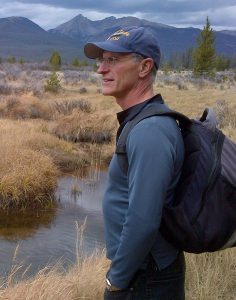 As you mentioned earlier, you also wrote a book humorously titled There’s a Porcupine in My Outhouse: Misadventures of a Mountain Man. Could you share with us how that book came about?
As you mentioned earlier, you also wrote a book humorously titled There’s a Porcupine in My Outhouse: Misadventures of a Mountain Man. Could you share with us how that book came about?
When I was 22 years old, I bought a cabin on a remote hilltop overlooking a lake in Vermont. My plan was to maybe hone my skills so that I could live off the land and quit my day job. It didn’t work out that way – in fact, I had so much to learn about living in the woods, it was one misadventure after another. The book is similar to Bill Bryson’s A Walk In The Woods. Mr. Bryson read an early draft of the book and wrote to me that he loved it, so that was a big boost. I wrote the book when I was about 40 years old, so I had perspective looking back at the younger me!
What is your writing process? Do you isolate yourself from your usual lifestyle? What percentage of your time in bringing a book to fruition is spent in research and what percentage in actual writing?
Unlike most writers, I do not set aside certain hours in the day to write. I might go a month without writing a thing, then go on a burst and write for hours every day. Because most of my books are non-fiction, I would estimate 40% is research and 60% is writing and editing.
You write on a wide variety of subjects. Do you have the same editors and publishers for all of your different types of books? If so, this must present them with a real challenge in marketing you and your work. How do they deal with that?
Of my seven survival and rescue books, six were published by Simon and Schuster. But for my other books, it has been a variety of publishers. My long-time agent, who recently passed away, would have preferred that I stick with the survival and rescue themes, but he also understood that I like to mix things up. There are many writers more gifted than me, but I believe I’m one of the more versatile writers out there.
Have you always been a writer?
I was in business management for many years and was moonlighting as a writer. It was extremely difficult but I have a theory that if you have a goal, and try to take one little step toward it each day, you will eventually arrive.
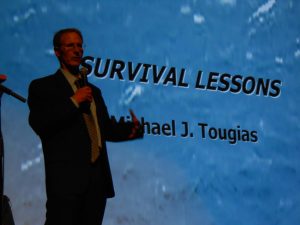 What is your next writing project?
What is your next writing project?
I have co-written a book with Casey Sherman about the U-2 Spy Plane pilots who discovered the missiles in Cuba during the Cuban Missile Crisis. The title is Above & Beyond: John F. Kennedy and America’s Most Dangerous Cold War Spy Mission. The book is in its final phase of copy-editing. It is already available on-line and will be released April 17 of this year. The research was brutal, and it might be the toughest project I’ve done, but I’m so glad I stayed with it because I love the finished product. I’m especially proud because the book draws attention to the sacrifice made by Major Rudolf “Rudy” Anderson, Jr., USAF, who was shot down on October 27, 1962 by the Soviets during his mission over Cuba.
One day in the faraway future, what would you like your epitaph to be on your tombstone?
That’s a tough one because I’ll probably have my ashes spread on my Vermont mountaintop. But if I did have a tombstone and it mentioned writing, I’d say something like “Here lies a writer. He wrote on war, rescue, humor, and nature. His only guiding principals were to write with passion, keep it fast paced, and don’t take yourself too seriously.”
Michael Tougias
America’s First Major War – King Philip’s Indian War and the Shaping of America
Osher Lifelong Learning Complex, FAU Jupiter Campus
Tuesday, February 20, 2018, 11:15 a.m. – 12:45 p.m.; Book-signing: 12:45 – 1:15 p.m.
To register, click here.



